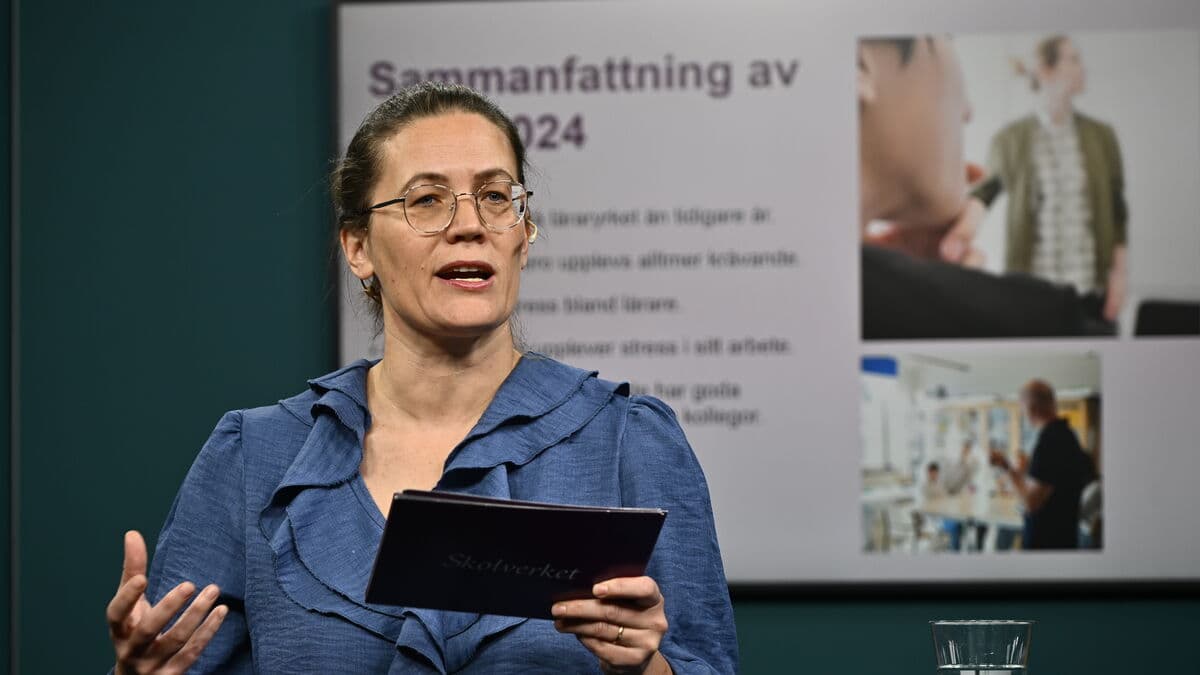The image is given in the world's largest study of teachers' professional conditions: Talis.
Against the background of the negative headlines that schools often receive, Talis gives a possibly surprising message: 92 percent of Swedish teachers in secondary school are satisfied with their job. This is the same level as the OECD average and as in Talis 2018.
Two out of three Swedish teachers would choose the same profession again if they had the choice, a noticeable increase since Talis 2013.
Another positive indication is the relatively low proportion of teachers who believe they will leave the profession within a few years. Among teachers under 55 years of age, the proportion is 17 percent, a significant decrease since 2018. Among teachers under 30 years of age, the proportion is as low as 10 percent.
Lowly valued
But some of the teacher education programs in Sweden have had difficulty filling the places and are likely linked to the profession's status. In Talis, only 15 percent of teachers think that the profession is highly valued in society.
The proportion who believe that the profession has high status has increased by about 10 percentage points since 2013, but the perceived status of the profession is still lower than the OECD average, says Stephanie Plenty, the Swedish National Agency for Education's project manager for Talis.
Not surprisingly, teachers also testify to stress. About 44 percent of Swedish secondary school teachers are quite or very stressed, the same proportion as in the previous measurement.
Still, it is administration that creates the most stress, says Anna Castberg, department head at the Swedish National Agency for Education.
Swedish teachers spend about three hours a week on administration, more than in other Nordic countries.
Disruptive students
Almost all Swedish teachers think that they and the students get along well most of the time. But noise and unrest in the classroom are a continued problem. 17 percent of teachers say that they lose quite a lot of teaching time due to this.
A negative result is that 42 percent of Swedish principals say that bullying occurs every week – twice as many as the OECD average. The picture is not unequivocal, however.
In our international studies among students where they state whether they are bullied, we do not see that Sweden stands out negatively, says Stephanie Plenty.
So despite the stress and noise – what is it that gives teachers job satisfaction?
Swedish teachers are very committed. Being able to influence society is an important driving force. They also see positively on the support from the principal and their working relationships, says Anna Castberg.
Anna Lena Wallström/TT
Marc Skogelin/TT
Facts: Talis
TT
Talis stands for Teaching and learning survey.
The organization responsible for the survey as a whole is OECD. The Swedish National Agency for Education is responsible for the Swedish part.
Talis is usually conducted at five-year intervals. The second most recent was conducted in 2018, the most recent in 2024 (a one-year delay due to the pandemic).
In the 2024 edition, 280,000 secondary school teachers and principals from around the world have participated, including in the Nordic countries.
Swedish participation: 3,065 secondary school teachers and 183 principals.
Talis on preschool will be published on December 2.
Source: OECD/The Swedish National Agency for Education





